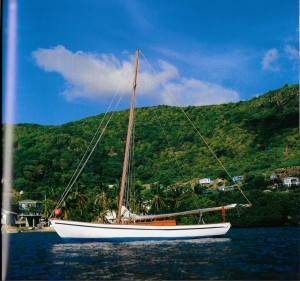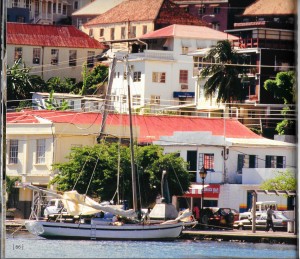The Making of a Beautiful Photography book
 Writing a book is no small task and writing a photographic coffee table book can be even more difficult. There are many factors that go into a coffee table book beginning with taking high quality photographs, writing the text, formatting both into an easy to read layout and finally create ready to print (CTP) files, all completed before a single book is printed. This particular project, was done as a tribute to the dying art of sloop and schooner building in the Grenadine island of Carriacou where this art is part of their history. There are two volumes both filled with beautiful photographs and paired in handsome slipcase.
Writing a book is no small task and writing a photographic coffee table book can be even more difficult. There are many factors that go into a coffee table book beginning with taking high quality photographs, writing the text, formatting both into an easy to read layout and finally create ready to print (CTP) files, all completed before a single book is printed. This particular project, was done as a tribute to the dying art of sloop and schooner building in the Grenadine island of Carriacou where this art is part of their history. There are two volumes both filled with beautiful photographs and paired in handsome slipcase.
As every publisher knows, the photography, writing and layout are only the beginning in the making of a photography book, the next steps are also crucial to the success of the project. Printing, packaging, shipping and marketing are the next steps that determine the outcome and InterPress was involved in the first three. When we were first approached to print this handsome set, we understood that it would require outstanding printing and a great deal of oversight. The photos were rich in color, bright blues, greens, reds and pinks, the photography perfectly showing off the beautiful array of vibrant colors. The subject matter, the art of schooner building, is a perfect medium for a photographer to show off his talents, documenting the ship building process and set on the beautiful Carriacou Island.
The Challenge – Proofing
The publisher / photographer was keen to perfectly match photos to print. This can only be achieved by using the most accurate proofing system, wet proofs.
Wet proofs are so named because they are made using printing ink on the same paper, brand and weight that will be used for printing. The more popular method currently used for proofing images are digital proofs and although the accuracy is acceptable to many publishers, they cannot match the accuracy of wet proofs. Digital proofs are hard (paper) copies but use bromide paper and color pigment instead of ink and tend to produce an over exaggeration of color.
The Process – Printing with the end in mind
We selected a set of 4-color process inks, especially its magenta, with a vibrant hue for both wet proofing and printing. In addition, before proofing and printing, we gave both the dampening and inking system a thorough cleaning lest ink contamination occur, affecting the color of the images on the colors proofs and printed sheets respectively. Ink contamination is the phenomenon that the ink in an inking unit (including inking rollers and ink trough) of a 4-color press is polluted by the ink transferred to it from its preceding inking unit(s) during printing when the paper passes from one inking unit to another. As the dampening unit can also be a medium of ink contamination, it is also necessary to wash the dampening rollers before the commencement of printing of images with vibrant colors.
For the inside pages, we used a thick, white glossy art paper, a brand which is whiter and stiffer than most other brands of the same thickness. We did so because the shade and stiffness of paper contribute in achieving the vibrancy of the color of a printed image and was necessary for this project.
On the technical side, we used the same imposition scheme as used to do the wet proofing so as to render the color effect of the images on the color proofs closer to the actual printing result. This is because the imposition scheme has a direct bearing on the ink track, which will affect the color effect of printed images.
The Result – A beautiful set of photography books
Everyone was very pleased with the books, they are beautiful, informative and a pleasure to read. This was not only a victory in printing but also a victory in documenting an art form rich in history. Do you have a photography book brewing?
You can learn more about the author, Alexis Andrews, and his latest adventures. Click here to visit his website.



Leave a Reply
Want to join the discussion?Feel free to contribute!